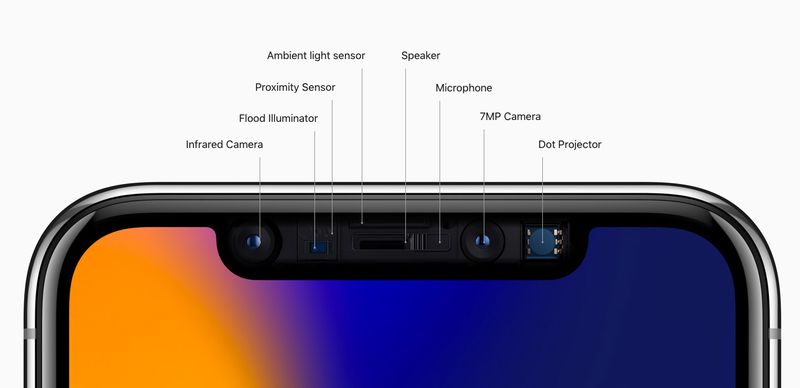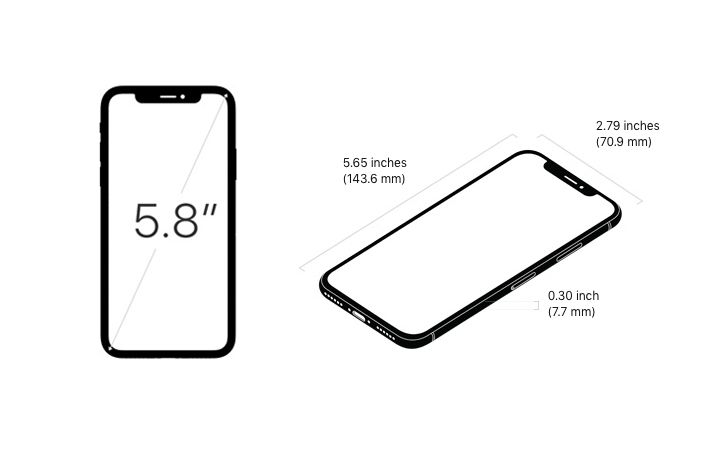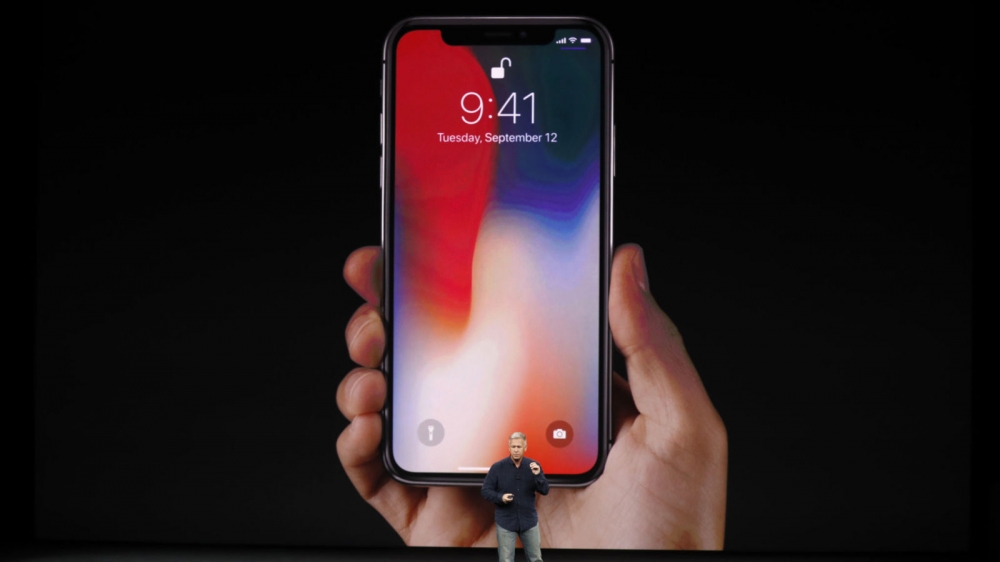Apple’s new iPhone X, unveiled on September the 12th with an edge-to-edge OLED display and a $999 price tag, is bound to shake up the high-end smartphone market in unforeseen ways. We don’t know how it will impact Apple’s overall sales, or whether it will set off a kind of mobile arms race to see which phone maker can outdo the other in the upper premium price point.
It’s already dividing both diehard Apple fans and longtime iOS detractors over the very idea of a phone costing into the four digits. More than any device before it, the X is testing both the value we put on smartphones and consumers’ willingness to pay for the best Apple to has offer.
The iPhone X doesn’t go up for preorder until October 27th, so you have quite a while to think over a potential purchase and decide whether the iPhone X is worth the extra cash over the equally powerful iPhone 8, which differs in only a few key areas from its bezel-less counterpart. (Of course, there’s also the now more affordable iPhone 7, which starts at a reasonable $549.)
The easiest way to dissect the decision is to do a bit of cost-benefit analysis, starting with what the iPhone X appears to do better than less pricey Apple models:
.jpg)
THE EDGE-TO-EDGE OLED SCREEN IS GORGEOUS
The most obvious standout feature of the iPhone X is the OLED screen, which the lucky few who’ve held it say is probably the most stunning smartphone screen they’ve ever seen. The edge-to-edge display is copied from past Android devices, starting more or less with the Xiaomi Mi Mix last year and making its way to global mainstream prominence in the Samsung Galaxy S8 back in April. But the lack of originality hasn’t stopped Apple from manufacturing a beautiful piece of hardware.
There are some weird quirks to contend with, like the controversial rectangular “notch” cut-out at the top of the screen, where Apple has stored a bevy of camera and sensor parts to perform tasks like Face ID and Animoji recordings. But Apple’s proprietary advantages include the coloration and brightness-adjusting True Tone display tech and a new Super Retina moniker that means the iPhone X sports a 2436 x 1125 resolution at 458 ppi across 5.8 inches of real estate. It’s also Apple’s first smartphone to come HDR-ready. All this adds up to an impressive display that is clearly the top differentiator between the iPhone X and the iPhone 8. Whether it’s worth the extra $200 or so is a harder call.
THE FRONT-FACING CAMERA IS MORE POWERFUL
Hidden inside the small notch cutout at the top of the iPhone X is a significant number of new camera parts and sensors that do more than just transpose your face onto an emoji cat or scan it to unlock your phone. The front-facing camera module now contains an infrared camera, flood illuminator, proximity scanner, ambient light sensor, speaker, microphone, 7-megapixel camera, and dot projector. All of that together combines into what Apple calls its TrueDepth camera, used for Animoji, Face ID, and a number of cool camera tricks.

TrueDepth is what makes the iPhone X’s front-facing camera capable of performing the aperture-reduction trick in its Portrait mode, a feature just a year ago restricted to the back camera of only the iPhone 7 Plus. It also makes the front-facing camera capable of Apple’s new Portrait Mode effects, which lets you replicate more professional flash lighting. These won’t make too big a difference to most of us, unless you happen to be an obsessive selfie taker who’s been clamoring for DSLR-quality capabilities. But having the most cutting-edge mobile photography features at your fingertips could be a big draw to a sizable segment of the iPhone-using population, and a good reason to upgrade to the X.
ANIMOJI IS A NEAT AND NOVEL FACE MAPPING CONCEPT
Animoji are cartoon animals that replicate your face movements, expressions, and speech using the front-facing camera and 3D mapping sensors of the iPhone X. It relies on the very same TrueDepth components required by Face ID and is another perfect example of Apple’s marriage of hardware and software to yield something more advanced than the industry standard. Apple’s implementation here feels like a wildly fun and goofy blend of cutting-edge tech with selfie-obsessed excess, if not also a bit of an extravagant resource waste. (Yes, that $1,000 iPhone can turn you into a poop emoji.)
At best, the iPhone X will only sell as many units as Apple can manage to manufacture this holiday season, which won’t be all that many we can assume. So you probably won’t see animoji populating your iMessage chats all that often, or at all in the near term. It might be years before the feature has the platform breadth to be a commonplace form of mobile communication. Still, these novel camera and software advancements prove that Apple can still perform a bit of magic, even if it’s of the childish variety, at the intersection of tech and art.

5.8-INCH SCREEN MEANS MORE REAL ESTATE IN A SMALLER PACKAGE
Apple’s new edge-to-edge display on the iPhone X means you’re getting a larger screen in a smaller package, at least compared with the iPhone 8 Plus. If you take a look at the dimensions, you’ll see that the display, measured diagonally, comes to 5.8 inches. That’s actually bigger than the height of the device itself, which comes in at 5.65 inches.
The iPhone 8 Plus, on the other hand, has those signature giant bezels. That means it has only a 5.5-inch screen, at a lower 1920 x 1080 resolution and 401 ppi, in a device that stands 6.24 inches. If you’re someone who treasures screen real estate for everything from movies to games to reading the news, the iPhone X’s screen is in every conceivable way a superior piece of hardware.
FACE ID FEELS LIKE THE FUTURE
At first blush, Face ID may feel like a setback, and there’s validity to that view. We don’t yet know how secure it will be, or whether it will come close to the efficiency of Touch ID and fingerprint reading. It’s also evident that if Apple could have built a fingerprint sensor underneath the glass of the iPhone X’s OLED display, that it probably would have.
Still, it’s easy to watch live demos of Face ID and feel like it could be the future of technological interaction. We had similar apprehensions about mobile fingerprint readers when they arrived on the scene more than half a decade ago, before the tech became ubiquitous and beloved, and now it feels like we’re entering the next chapter in mobile security. (Naturally, like with the edge-to-edge screen, Apple didn’t arrive here first, but it’s conceivable its facial recognition tech will be superior to past implementations.)
There will be security kinks to iron out, for sure, and unpleasant law enforcement intricacies to dig into it, but the iPhone X’s ability to map your face, recognize it, and use that information intelligently is exciting. There’s a chance it will move beyond unlocking your phone, just as Touch ID became central to mobile payments on the iPhone. What that new use case looks like is anyone’s guess — artificial intelligence reading and responding to your emotional state, perhaps — but 3D face mapping will surely open up some interesting new possibilities down the line.
.jpg)
As is the case with many Apple products, there are compromises, even with a device that costs as much as a mid- to upper-tier PC. For as many benefits as the iPhone X grants you, with its extra-large screen and new 3D mapping capabilities, there are as many drawbacks worth considering before you make such a hefty purchase.
It’s not just that last year’s model is so cheap — now only $549 — or that the iPhone 8 comes with the same processor. The iPhone X, because it ditches the home button and packs in so many aggressive forward-looking features, is bound to feel at times like it’s got a foot stuck in two different eras of technology.
So here’s where the most expensive iPhone ever made appears to falls short:
THE IPHONE X IS EXPENSIVE... VERY EXPENSIVE
The only aspect of the iPhone X perhaps more noticeable than its display is its price tag. Apple has set the starting cost for its flagship product, for the very first time, at north of $1,000, when you factor in taxes or the 256GB storage configuration. The device is even more expensive outside the US — customers in Italy, Russia, and Poland, for instance, will all have to pay around $1,600 for a 256GB version of the iPhone X.
There is no getting around this being an eye-popping price for a device most customers associate with a $600 to $800 range. We’ve also only just become accustomed to seeing the real cost of a smartphone, after cell carriers here in the US have all moved away from the two-year contract subsidy model that obscured a phone’s true price.
But the reality of the situation is that Apple’s business continues to depend primarily on iPhone sales, which peaked in unit volume back in 2015. The company knows that there’s a market out there for premium, high-end smartphones, and there’s surely going to be no shortage of Apple fans eager to buy the X when preorders go live later in October. However, on a deeper level, the shift upward in pricing, for both Apple and Samsung, represents a new era for the smartphone, when the predominant computing platform on the planet has a price tag to match its significance. It’s just going to hit our wallets now harder than ever before, and that’s a tough pill to swallow for most.
THE LOSS OF TOUCH ID
You can embrace the bold, 3D mapping future promised by Apple’s new Face ID while at the same time bemoaning the loss of Touch ID. While it may not work on the edge-to-edge OLED display of the iPhone X, at least not yet, Touch ID has grown over the years into one of the fastest, most secure biometric unlocking system of any modern smartphone, if not the best. Losing it will be an annoying compromise for many X buyers who must now contend with a new, unproven system. The verdict’s still out on whether Face ID will seamlessly work for users of all colors and ethnicities, a severe bias hurdle tech companies, which are primarily white and male, have fallen victim to in the past. (Apple says the tech will work in the dark and adapt to changes in your appearance, like the inclusion of hats and glasses, over time.)
There’s also a growing debate over what it means for law enforcement, who can easily point the device at you to unlock your iPhone, as opposed to compelling you to put your thumb on the device’s home button or copying it from a fingerprint record. (For reference, you do not have to give law enforcement your numeric passcode, as that’s protected by the Fifth Amendment as “testimonial” evidence). There is a way to instantly disable Face ID by pressing the side button on the iPhone X five times, but that seems like a messy workaround that could go wrong in stressful situations. So it’s safe to say that there is a real possibility Face ID is arriving too soon for society to have fully worked out its implications.
UI COMPLEXITY MAKES ONE-HAND USE DIFFICULT
Because the iPhone X does not contain a home button, or even a software version of one, the entire user interface of iOS 11 on the device has been altered. There’s a whole new system of gestures and swipes to learn and master, and many of them will be annoying to remember and difficult to perform with just one hand. Closing apps now requires you swipe up from the bottom, while swiping up and then holding opens the multitasking app switcher. Control Center is now surfaced by swiping down from right corner, while a swipe down from the left gets you to the notification list.
There are a bunch of other weird quirks involved, like accessing Siri by holding down one of the side buttons, which raises the question of how you turn the phone off now. There’s also the matter of capturing a mobile screenshot, which used to involve holding down the home button and power button. But perhaps the most perplexing change here is how difficult it will be to use the iPhone X with one hand, now that very useful sections of iOS 11 are buried behind high-cornered downward swipes. If you don’t have exceptionally large hands, it seems as if the iPhone X will be a strictly two-handed device.
APPLECARE+ COSTS $199, UP FROM $129
Apple has set the price for its AppleCare+ insurance plan for the iPhone X at $199, a big jump from the current $129 for both the iPhone 7 and iPhone 8. While it may be related to the more expensive screen — Apple is still charging only $29 for a broken screen repair through AppleCare — a $199 charge on top of a $999 or $1,149 device makes the purchase that much more unattractive.
AppleCare+ is in fact bundled with Apple’s iPhone Upgrade Program, so you get that added benefit if you lease the phone from the company itself. However, it’s likely a lot of buyers won’t be using Apple’s program, choosing instead to buy the device outright or going through a cell carrier instead. And with a display this large, despite Apple’s claims of using “the most durable glass ever in a smartphone,” you’re probably going to want insurance (or a big case) for that seemingly inevitable sidewalk pavement drop.
.jpg)
A11 BIONIC CHIP AND WIRELESS CHARGING ALSO ON THE IPHONE 8
Apple made a strategic decision to include its most powerful chip, the new A11 Bionic, in both the iPhone 8 and the iPhone X. That way, the company wouldn’t split its user base and developer community by pushing app makers toward optimizing for a device only a small number of consumers might have by year’s end. That’s a smart move. But it also undermines the value of the iPhone X, restricting its uniqueness to the OLED screen and front-facing camera tech. The same goes for Apple’s new wireless charging feature, which will work across the iPhone 8 family and the X because both devices have the same glass back.
When considering which device you really want to buy, knowing that you’ll still get the fastest chip Apple has ever made, all the benefits of its new wireless charging feature, and the known security and familiarity of Touch ID makes the iPhone 8 that much more attractive, on top of its lower price point. Of course, those early adopters and diehard fans already considering the X may not care about all that when faced with the possibility of having the greatest and latest Apple phone. For everyone else, this lack of substantial distinction should make buying a less flashy model that much easier.

